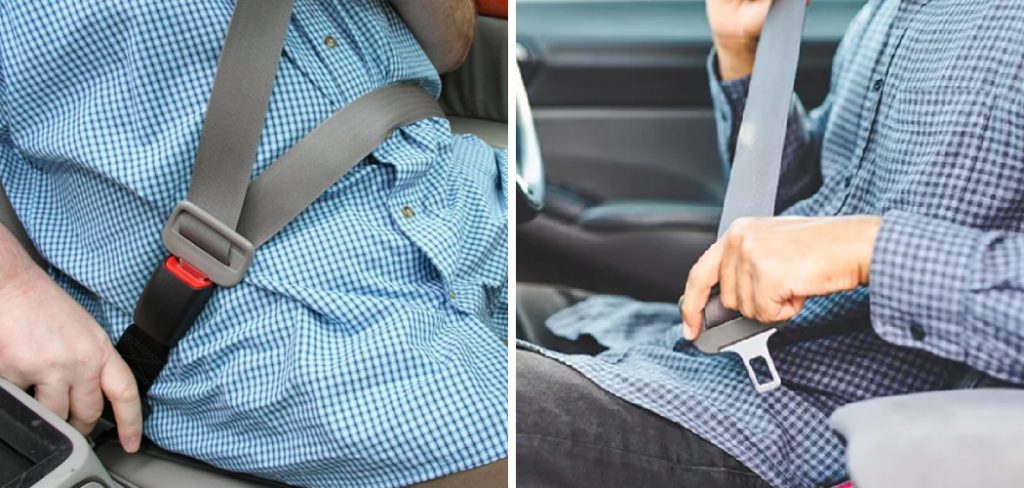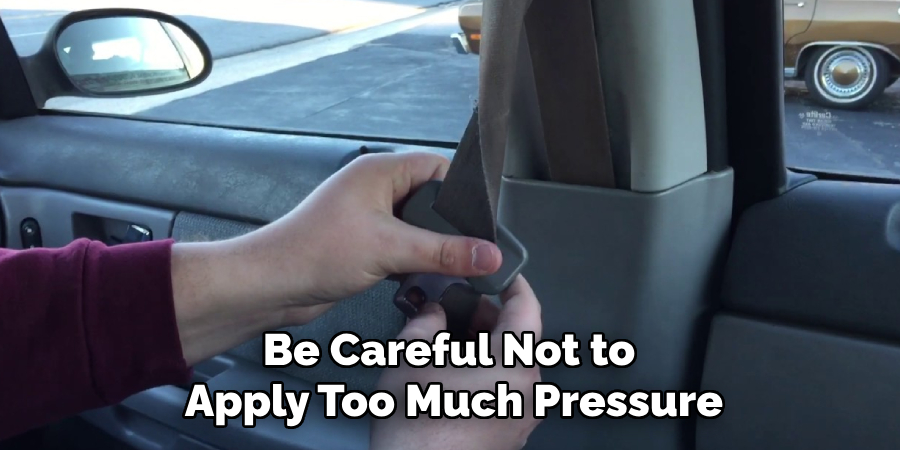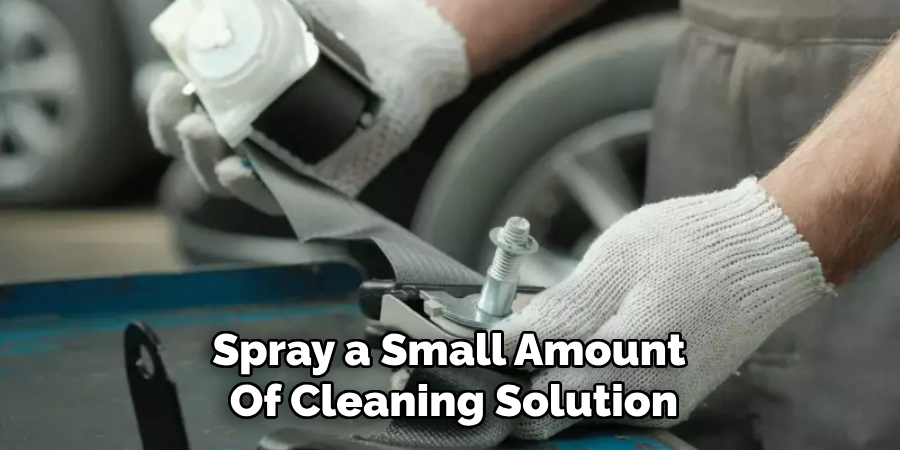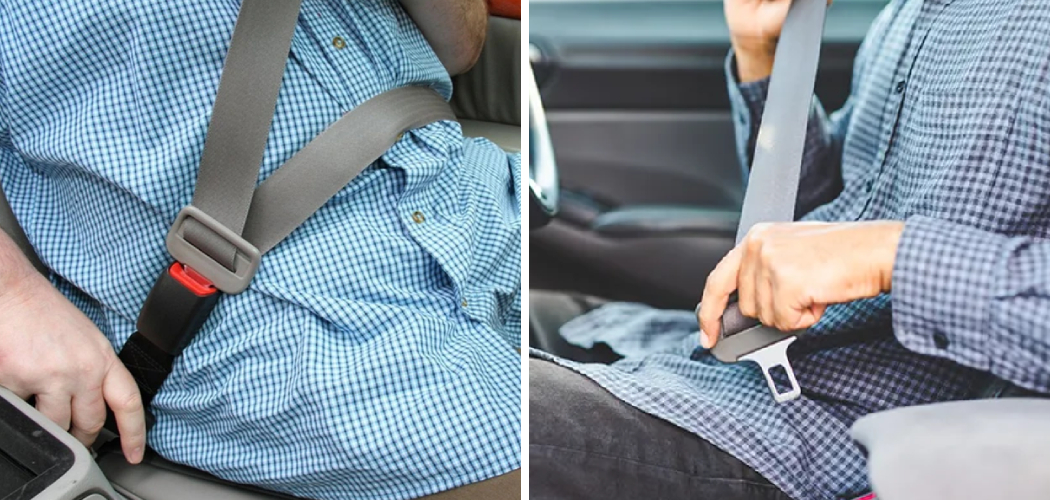Locked seat belts can be a frustrating issue, especially when you need to get going quickly. Whether it’s part of a routine drive or an urgent need, a jammed seat belt can put a wrench in your plans and compromise safety.

This guide on how to fix a seat belt that is locked aims to provide easy-to-follow steps to help you diagnose and fix a locked seat belt, ensuring you can get back on the road safely and without delay.
Why Do Seat Belts Get Stuck?
Seat belt locks are designed to engage in the event of a sudden stop or collision, holding you securely in place and minimizing the risk of injury. However, there are times when the lock can become jammed, making it difficult or impossible to release the belt.
One common reason for a stuck seat belt is the accumulation of dirt, debris or food particles in the buckle mechanism. These can interfere with the locking mechanism, preventing it from releasing properly. In some cases, extreme temperatures can also cause the components of the seat belt to expand or contract, resulting in a jammed lock.

Needed Tools and Materials
Tools:
Screwdriver:
A small flathead screwdriver can come in handy when trying to clean out any debris from the buckle mechanism.
Pliers:
Pliers may be needed if the seat belt is stuck due to a twisted or tangled belt. They can help untangle the belt and release it from the buckle.
Materials:
Cleaning solution:
To remove any debris or buildup from the buckle mechanism, a cleaning solution such as rubbing alcohol or warm soapy water can be used.
Silicone spray:
If extreme temperatures are causing the seat belt to stick, a silicone spray lubricant can help prevent future jams by keeping the mechanisms running smoothly.
6 Step-by-step Guide on How to Fix a Seat Belt That is Locked
Step 1: Inspect the Buckle
Begin by closely examining the seat belt buckle to identify any visible signs of debris, damage, or wear. Using a flashlight can help you get a clearer view of the buckle mechanism. Look for any foreign objects like dirt, crumbs, or small items that may have become lodged inside. If you notice any such obstructions, try to dislodge them gently using the small flathead screwdriver mentioned in the tools section.

Be careful not to apply too much pressure, as this could further damage the buckle. If the buckle appears clean but still won’t release, proceed to the next steps for further troubleshooting.
Step 2: Check the Belt for Tangles
Once you have inspected the buckle, the next step is to check the seat belt itself for any tangles or twists. Unbuckle the belt completely, if possible, and slowly pull it out to its full length. Carefully examine the belt for any knots, twists, or irregularities that may be causing it to jam. If you find any tangles, gently work them out using your hands or pliers.
Straightening out the belt can often resolve the issue by allowing the retractor mechanism to function smoothly. After ensuring the belt is completely untangled and straight, try to re-buckle and unbuckle it to see if the problem persists. If the seat belt still won’t release, proceed to the next step for further troubleshooting.
Step 3: Apply Cleaning Solution to the Buckle
If dirt or debris was found inside the buckle during your inspection, it’s time to clean it out. Spray a small amount of cleaning solution, such as rubbing alcohol or warm, soapy water, into the buckle mechanism and use a cloth or Q-tip to wipe away any buildup. Be sure to thoroughly dry the buckle before attempting to use it again.
Re-buckle and unbuckle the seat belt multiple times to ensure that the cleaning solution has reached all parts of the mechanism. If this step does not resolve the issue, continue to the next step for further troubleshooting.
Step 4: Use Silicone Spray
If extreme temperatures are causing the seat belt to stick, silicone spray can help lubricate the mechanisms and prevent future jams. Apply a small amount of silicone spray into the buckle mechanism and work it in by repeatedly buckling and unbuckling the belt. This will help distribute the lubricant evenly throughout the mechanism.
Once you have completed this step, try using the seat belt again to see if it releases properly. If not, proceed to the next step for further troubleshooting.
Step 5: Check for Physical Damage
If cleaning and lubricating the buckle mechanism have not resolved the issue, the next step is to check for physical damage. Examine the seat belt components for any signs of wear, such as fraying, cuts, or other visible damage. Pay close attention to the buckle, retractor, and the belt itself.

If the buckle is cracked or visibly broken, it may need to be replaced. Similarly, if the belt appears worn or damaged, it might not retract or release properly and could require professional repair or replacement. In some cases, damage may be internal and not easily visible, so it might be necessary to consult with a mechanic or seat belt specialist.
Step 6: Seek Professional Help
If all the above steps have been followed and the seat belt still won’t release, it may be time to seek professional help. Seat belts are essential safety features in a vehicle, and any errors or damage should be addressed by a trained technician. A mechanic or a specialized seat belt repair shop will have the necessary tools and knowledge to diagnose and fix any underlying issues with your seat belt.
Following these steps on how to fix a seat belt that is locked can help you troubleshoot and fix a locked seat belt on your own. However, if the problem persists, it is always best to consult with a professional for proper diagnosis and repair. Keeping your seat belt in good working condition is crucial for your safety on the road, so be sure to address any issues promptly.
So, next time when you encounter a stuck or jammed seat belt, don’t panic! Simply follow this guide and address the issue effectively. Stay safe on the road! Keep buckled up! Happy driving!
Do You Need to Use Professionals?
In most cases, following the above steps should help resolve a locked or jammed seat belt. However, if you are unable to fix the issue yourself, it is always advisable to seek professional help. Seat belts are crucial safety features in a vehicle and any malfunction or damage can compromise their effectiveness.
Moreover, attempting to fix a seat belt without proper knowledge and tools can lead to further damage or even injury. Therefore, it is best to consult with a mechanic or specialized seat belt repair shop for proper diagnosis and repair of any underlying issues with your seat belt. They will have the necessary expertise and equipment to ensure that your seat.
Frequently Asked Questions
Q: Why is My Seat Belt Not Releasing?
A: There could be various reasons why your seat belt is not releasing, such as debris or tangles in the buckle mechanism, extreme temperatures, physical damage, or internal issues. It’s essential to follow the troubleshooting steps mentioned above to determine the cause and find a solution.
Q: Can I Fix a Locked Seat Belt Myself?
A: Yes, you can fix a locked seat belt yourself by following the troubleshooting steps outlined in this guide. However, if the problem persists or you are unsure of how to proceed, it is best to seek professional help.
Q: How Do I Prevent My Seat Belt from Locking?
A: Regularly cleaning and lubricating your seat belt mechanism can help prevent it from locking. Avoid exposing your seat belt to extreme temperatures and check for any visible damage regularly. If you notice any issues, address them promptly to prevent further damage. Keep your seat belt in good working condition for optimal safety while driving. So, remember to always buckle up and stay safe on the road!

Q: Is It Safe to Drive with a Jammed Seat Belt?
A: No, it is not safe to drive with a jammed or locked seat belt. In case of an accident, a malfunctioning seat belt can fail to provide the necessary protection and increase the risk of injury. It is essential to address any issues with your seat belt promptly to ensure your safety on the road. Always make sure your seat belt is in good working condition before driving.
Conclusion
A stuck or locked seat belt can be an inconvenience and a safety hazard. However, with this guide on how to fix a seat belt that is locked, you now know what steps to take to troubleshoot and resolve the issue.
Remember to always follow proper safety precautions, such as wearing a seat belt while driving, and seek professional help if needed. By keeping your seat belt in good working condition, you are ensuring your safety on the road. Safe driving! Keep buckled up!

